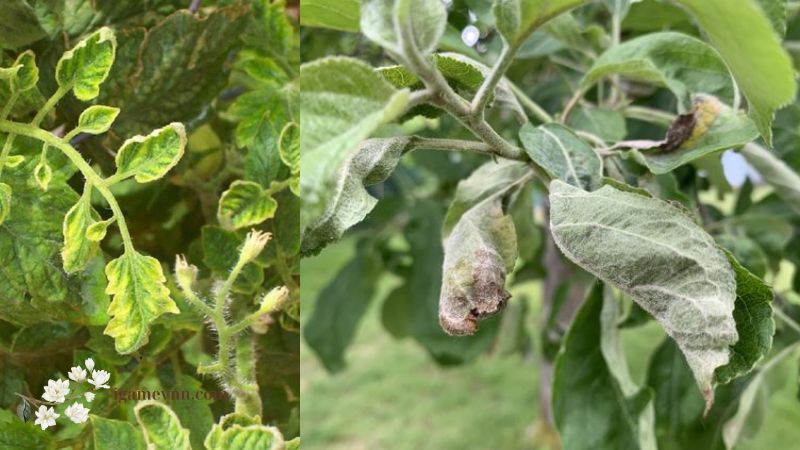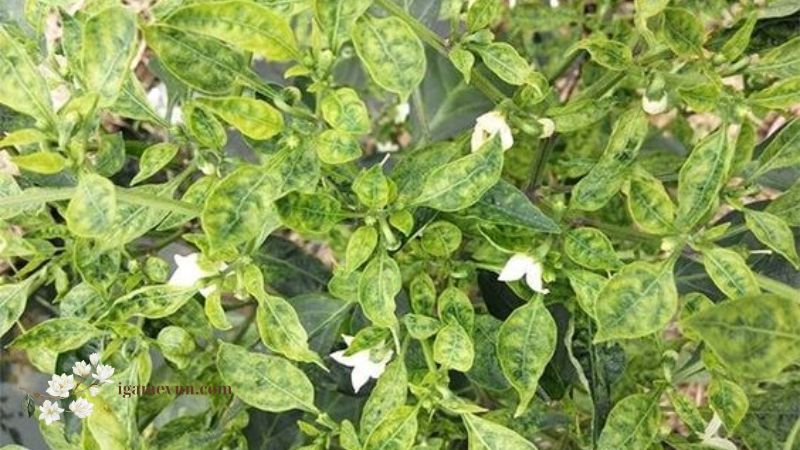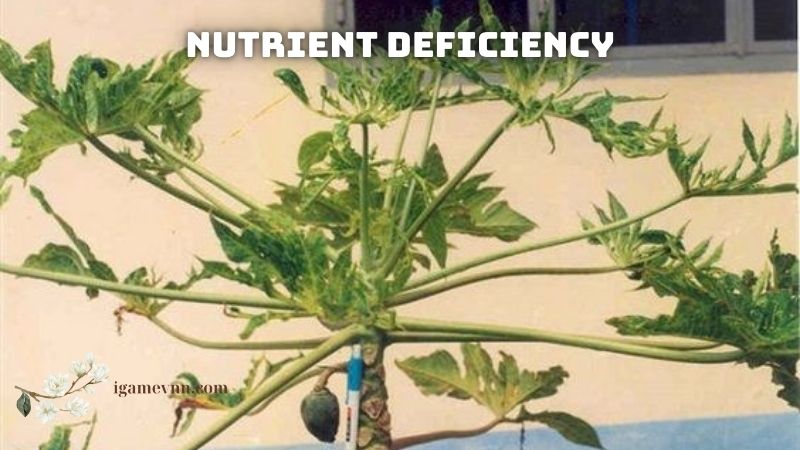When you notice that the tree has curly leaves, it can be a sign of various underlying issues. Healthy tree leaves are typically flat and smooth, but when they start to curl, it indicates that something is wrong. Understanding the potential causes and remedies is crucial for maintaining the health of your tree. This article from Igamevnn will delve into the common causes of leaf curl, how to diagnose the problem, and what steps to take to rectify it.
The Tree has Curly Leaves
1. Pests
One of the most common reasons the tree has curly leaves is pest infestation. Tiny insects such as aphids, spider mites, and thrips feed on the sap of the leaves, causing them to curl and distort. These pests are often difficult to see with the naked eye but leave behind visible signs such as sticky residue (honeydew), webbing, or tiny holes in the leaves.

Identifying Pests:
- Aphids: Small, pear-shaped insects that come in various colors.
- Spider Mites: Tiny, often red or brown, and usually found on the undersides of leaves.
- Thrips: Slender insects that cause silvery or bronze streaks on leaves.
Treatment:
- Natural Predators: Introducing ladybugs or predatory mites can help control aphid and mite populations.
- Neem Oil: A natural pesticide that can be sprayed on the affected areas.
- Insecticidal Soap: Effective against a variety of soft-bodied pests.
2. Diseases
Fungal and viral infections are another reason why the tree has curly leaves. These diseases can distort leaves, affect photosynthesis, and weaken the overall health of the tree.

Common Diseases:
- Peach Leaf Curl: Caused by the fungus Taphrina deformans, this disease affects peaches and nectarines, causing thickened, puckered, and reddish leaves.
- Powdery Mildew: A fungal disease that covers leaves with a white, powdery substance, leading to curling and stunted growth.
- Mosaic Virus: Causes mottled patterns on the leaves and can result in curling and deformation.
Treatment:
- Fungicides: Applying fungicides in early spring can prevent diseases like peach leaf curl.
- Pruning: Removing and disposing of infected leaves and branches can help prevent the spread of disease.
- Sanitation: Keeping the area around the tree clean and free of fallen leaves can reduce the risk of disease.
3. Environmental Stress
Environmental factors often explain why the tree has curly leaves. Trees can be sensitive to changes in their environment, and stress from drought, overwatering, or poor soil conditions can manifest as curled leaves.
Identifying Environmental Stress:
- Drought: Leaves may curl inward to conserve moisture.
- Overwatering: Leaves may turn yellow and curl due to waterlogged roots.
- Soil Compaction: Poor soil aeration can stress roots, leading to leaf curl.
Treatment:
- Proper Watering: Ensure the tree receives adequate water, especially during dry spells, but avoid overwatering.
- Mulching: Mulch around the base of the tree to retain moisture and regulate soil temperature.
- Soil Aeration: Loosen compacted soil to improve root health.
4. Nutrient Deficiency
A lack of essential nutrients can cause various symptoms, including leaf curl. When the tree has curly leaves, it may be an indication of nutrient deficiencies.

Common Nutrient Deficiencies:
- Nitrogen: Leaves may be pale or yellow and curl downward.
- Potassium: Leaf edges may brown and curl upward.
- Magnesium: Interveinal chlorosis (yellowing between veins) and curling can occur.
Treatment:
- Fertilization: Use a balanced fertilizer to address nutrient deficiencies. Soil tests can determine specific nutrient needs.
- Organic Matter: Adding compost or well-rotted manure can improve soil fertility and structure.
5. Chemical Damage
Exposure to herbicides or other chemicals can damage a tree, resulting in curled leaves. Drift from herbicide applications in nearby areas can be particularly harmful.
Identifying Chemical Damage:
- Uniform Curling: If multiple trees or plants show similar symptoms, chemical damage is likely.
- Leaf Discoloration: Leaves may show unusual colors or patterns in addition to curling.
Treatment:
- Avoiding Drift: Be cautious when applying herbicides near trees and avoid spraying on windy days.
- Watering: Thoroughly watering the tree can help dilute chemicals in the soil.
- Activated Charcoal: In severe cases, activated charcoal can be applied to the soil to absorb chemicals.
Diagnosing the Problem
When the tree has curly leaves, a systematic approach to diagnosis is essential:
- Inspect for Pests: Check the leaves and stems for signs of insects.
- Examine for Diseases: Look for symptoms like discoloration, spots, or powdery residue.
- Assess Environmental Conditions: Consider recent weather patterns and soil conditions.
- Test Soil Nutrients: Conduct a soil test to identify nutrient deficiencies.
- Review Chemical Exposure: Recall any recent use of herbicides or pesticides nearby.
Steps to Remedy Curly Leaves
Once the cause is identified, taking appropriate action is crucial to restoring the health of the tree:
- Pest Control: Use natural predators, neem oil, or insecticidal soap to manage pests.
- Disease Management: Apply fungicides, prune infected areas, and maintain good sanitation practices.
- Address Environmental Stress: Adjust watering practices, mulch, and aerate the soil as needed.
- Correct Nutrient Deficiencies: Apply the appropriate fertilizers and organic matter to enrich the soil.
- Prevent Chemical Damage: Take precautions to avoid herbicide drift and treat affected trees with water and activated charcoal.
Conclusion
When the tree has curly leaves, it is a signal that the tree is under stress or affected by an external factor. By understanding the potential causes—pests, diseases, environmental stress, nutrient deficiencies, and chemical damage—you can take the necessary steps to diagnose and treat the problem. Regular monitoring and timely intervention are key to maintaining the health and beauty of your trees. Remember, a proactive approach to tree care not only resolves current issues but also prevents future problems, ensuring that your trees thrive for years to come.

